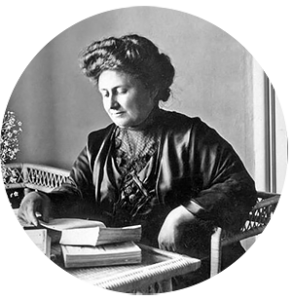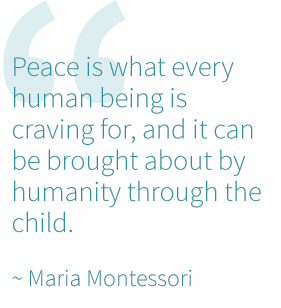

About Maria Montessori
“Never help a child with a task at which he feels he can succeed.”
Maria Montessori was, in many ways, ahead of her time. Born in the town of Chiaravalle in the province of Ancona, Italy, in 1870, she became the first female physician in Italy upon her graduation from medical school in 1896. Shortly afterwards, she was chosen to represent Italy at two different women’s conferences, in Berlin in 1896 and in London in 1900.
In her medical practice, Maria Montessori’s clinical observations led her to analyse how children learn, and she concluded that they build themselves from what they find in their environment. Shifting her focus from the body to the mind, she returned to university in 1901, this time to study psychology and philosophy.
In 1904, Maria Montessori was made a Professor of Anthropology at the University of Rome. Her desire to help children was so strong, however, that in 1906 she gave up both her university chair and her medical practice to work with a group of sixty young children of working parents in the San Lorenzo district of Rome. It was there that she founded the first Casa dei Bambini, or ‘Children’s House’. What ultimately became the Montessori method of education was developed there, based upon Montessori’s scientific observations of these children’s almost effortless ability to absorb knowledge from their surroundings, as well as their tireless interest in manipulating materials. Every piece of equipment, every exercise, every method Montessori developed, was based on what she observed children to do ‘naturally’, by themselves, unassisted by adults.
Children teach themselves. This simple but profound truth inspired Montessori’s lifelong pursuit of educational reform, methodology, psychology, teaching, and teacher-training–all based on her dedication to furthering the self-creating process of the child.
Maria Montessori died in Noordwijk, Holland, in 1952.
Content courtesy of the North American Montessori Teachers’ Association (NAMTA). All rights reserved.
